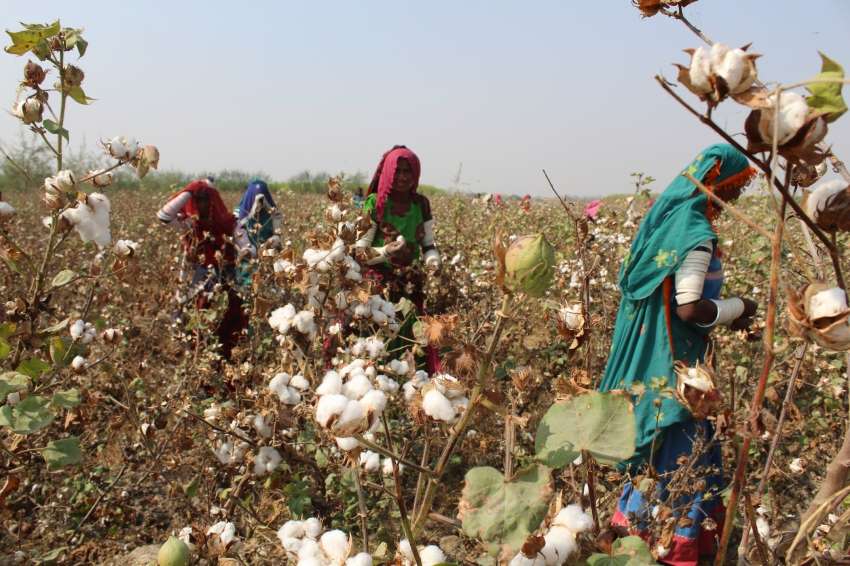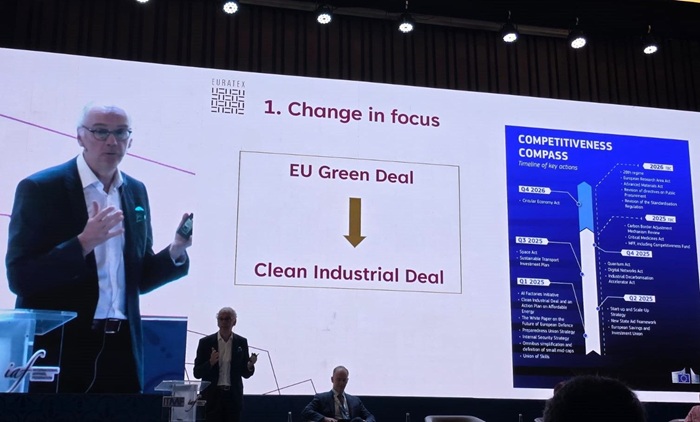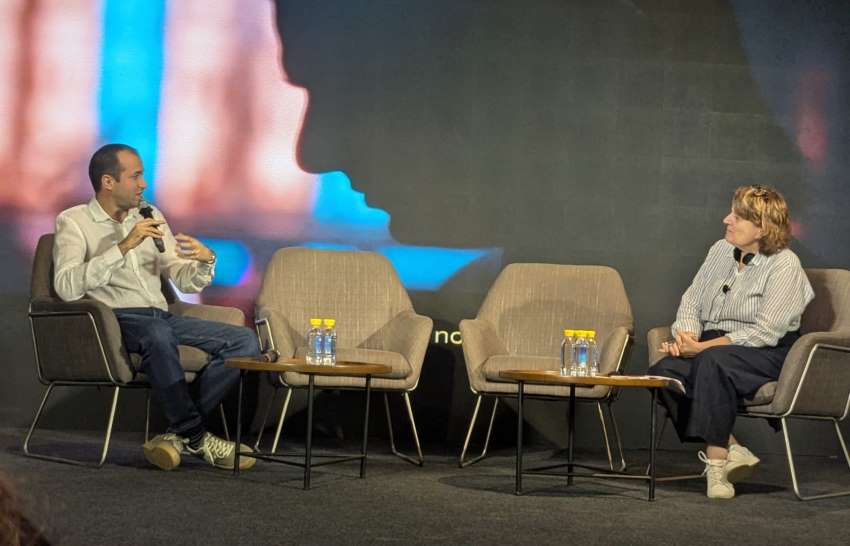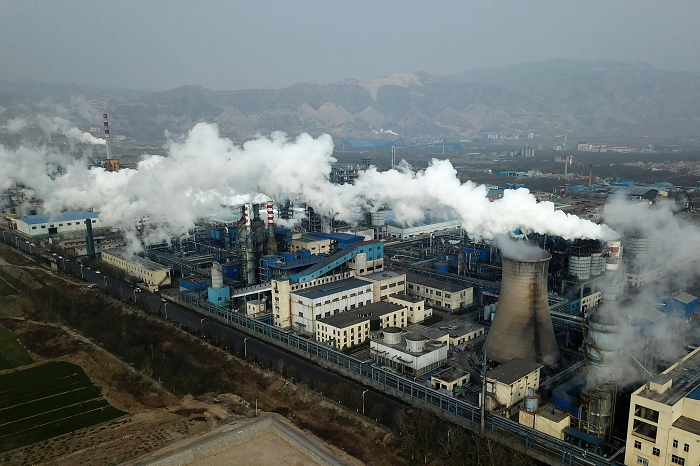FW
Sales of Los Angeles-based fashion retailer, Guess, Inc increased by 8 per cent to $3 billion in FY25. Largely fueled by a strong fourth quarter, this growth was further boosted by the company's acquisition of Rag & Bone.
In Q4, FY25 that ended February 1, 2025, the company’s sales increased by 5 per cent to $932.3 million. Regionally, sales in Europe increased by 2 per cent while Asia sales declined by 15 per cent. The company’s retail revenues in the Americas increased by 4 per cent despite a 14 per cent decline in retail comparable sales, including e-commerce. However, wholesale revenue from the Americas increased by 63 per cent while licensing revenue expanded by 18 per cent.
The company’s net income for the quarter declined by 29 per cent to $81.4 million. Guess attributed its quarterly growth to the acquisition of the brand Rag & Bone last April, as well as positive momentum in its European and American wholesale businesses and increased licensing revenue. All of the company’s operating segments reported revenue growth, except for the Asia segment, states Carlos Alberini, Chief Executive Officer, Guess, Inc's
The company witnessed robust results in its licensing segment and wholesale businesses in Europe and the Americas, but fell short of our direct-to-consumer targets due to slower customer traffic in North America and Asia. Overall, its turnover increased to $3 billion, and $174 million and $180 million in GAAP and adjusted operating earnings, respectively.
Guess also appointed Alberto Toni as its new Chief Financial Officer, effective mid-June. Currently engaged as the Group Managing Director and CFO of Flos B&B Italia Group SpA,
Toni will succeed Dennis Secor, interim CFO who will remain with the company as Executive Vice President until September 12, 2025 to ensure a smooth transition. Toni will be based in Lugano, Switzerland, and will oversee Guess's global finance operations.
Alberini says, the company looks forward to Toni’s leadership as it optimizes its business portfolio, improves cost structure, and positions Guess for long-term growth
The state-run Cotton Corporation of India (CCI) procured 1 crore cotton bales, each weighing 170 kg, at the Minimum Support Price (MSP) during the 2024-25 marketing season. Telangana led these procurement efforts, followed by Maharashtra and Gujarat, highlighting regional variations in cotton production.
As of March 26, 2025, Telangana accounted for the largest share of CCI's procurement, with 40.38 lakh bales. Maharashtra contributed 29.34 lakh bales, Gujarat 14.10 lakh bales, and Karnataka 5.22 lakh bales. Other significant contributions came from Madhya Pradesh (3.95 lakh bales) and Andhra Pradesh (3.83 lakh bales). Smaller procurements were recorded in Odisha, Haryana, and Rajasthan.
This year's procurement marks the second-highest volume since 2019-20, when CCI procured over 1.05 crore bales. The current figure represents over a third of the nation's total cotton production for the 2024-25 crop season. The Committee on Cotton Production and Consumption (COCPC) recently revised its crop estimate to 294.25 lakh bales.
According to the Cotton Association of India (CAI), cumulative market arrivals of cotton reached 244.25 lakh bales by March 29, 2025 indicating that over 82 per cent of the season's production has entered the market. Despite this, raw cotton prices remained below MSP levels in parts of Gujarat and Maharashtra.
CCI now faces the challenge of selling its procured bales at favorable prices. With weak global cotton prices and limited export viability, the corporation must navigate a complex market.
Though essential buyers, Indian spinning mills are not currently pressured to make purchases. Industry analysts predict that as private market stocks diminish, CCI may adjust prices to align with import parity.
Market experts also note, export demand remains sluggish, and multinational corporations are not actively buying due to high basis levels. The domestic market shows signs of price stabilization with a potential upward trend. As private ginner stocks decrease, the gap between
CCI and market prices is expected to narrow. A potential rise in ICE cotton futures could further drive domestic price increases.
India exported textiles and apparel (T&A) worth 10.5 billion dollars to the USA in 2024, accounting for 28.5 per cent of India’s total T&A exports and 13 per cent of its overall merchandise exports to the US. Over the past five years, India has remained a preferred sourcing destination for US buyers compared to competitors like China, Vietnam, and Bangladesh.
The recent introduction of a 27 per cent reciprocal tariff for India lower than China’s 34 per cent, Bangladesh’s 37 per cent, and Vietnam’s 46 per cent appears to offer a competitive edge. However, the key challenge will be how this cost is absorbed. Historically, suppliers have borne most cost escalations, as passing the entire burden onto consumers is difficult. Given the sharp tariff rise, importers may seek more cost-effective sourcing from countries with stronger logistics and supply chain efficiencies.
Sector-specific tariff adjustments also remain a possibility, as a uniform rate across industries may not be feasible. An analysis of the top 10 T&A products imported by the US from India, which make up 40 per cent of total Indian T&A exports to the US, shows they currently attract an average US tariff of 10.28 per cent. Any tariff hikes could raise costs and impact short-term demand. While immediate effects are limited, sustained tariff increases may weaken long-term demand for Indian exports.
With trade policies evolving, India must closely track competitors responses. Some nations in the textile value chain are expected to announce zero-tariff policies for US exports, making it crucial for India to engage with US authorities to secure favorable terms.
A slowdown in US demand and uncertainty over tariff details pose concerns. However, the current tariff regime offers India a relative advantage in market access. To ensure resilience, Indian exporters must also explore alternative global markets while strengthening trade relations with the US.
With an aim to penetrate the vast Chinese and Asian markets, 22 African fashion brands launched their debut collections at the Shanghai Fashion Week Autumn/Winter 2025edition.. This move highlights China's burgeoning ‘debut economy,’ where new product launches and brand introductions drive consumer spending.
Running March 25-April 1, 2025, the ‘Innovascape’ themed week featured nearly 100 runway shows and showcased approximately 1,000 brands. African designers displayed their unique creations, emphasizing handmade weaving, natural dyeing, and sustainable practices.
Hannah Ryder, CEO, Development Reimagined, facilitated this unprecedented group debut, bringing designers from 12 African nations to connect with global buyers at the MODE trade exhibition. He emphasized on the readiness of African brands to enter the Chinese market with their creativity and sustainable practices.
A global fashion hub, Shanghai Fashion Week provided an ideal platform for African designers to network and expand their reach across Asia, including Southeast Asia, Japan, and South Korea. Contrary to common perceptions, African fashion showcases diverse design languages, transcending vibrant patterns.
Brands like South Africa-based Molebatsi, co-founded by Jessica Jane and Wandile Molebatsi, showcased fusion designs. It blended Chinese-style buckles and Hanfu-inspired cuffs with African geometric patterns and South African tribal motifs. Jane's inspiration stemmed from a trip to China, where she was captivated by traditional Chinese clothing.
Highlighting the potential for mutually beneficial collaborations, Molebatsi remarked, China offers immense opportunities for African designer. A newcomer to the Chinese market, secured buyer interest and initiated market entry planning.
Phuti Tsipa, Consul General of South Africa in Shanghai, emphasized the significance of this debut, envisioning African brands as mainstream players in the global fashion industry. Raphael Deray, a buyer from Printemps in Paris, highlighted Shanghai's potential as a fashion hub.
Tong Jisheng, Director-Organizing Committee, Shanghai Fashion Week, highlighted the event's role in amplifying innovative fashion and fostering global brand engagement.
The ‘debut economy’ is a key driver of Chinese consumption, and Shanghai is actively supporting it. Liu Min, Deputy Director, Shanghai Municipal Commission of Commerce, outlined policies to streamline customs, provide financial incentives, and encourage long-term brand presence in the city.
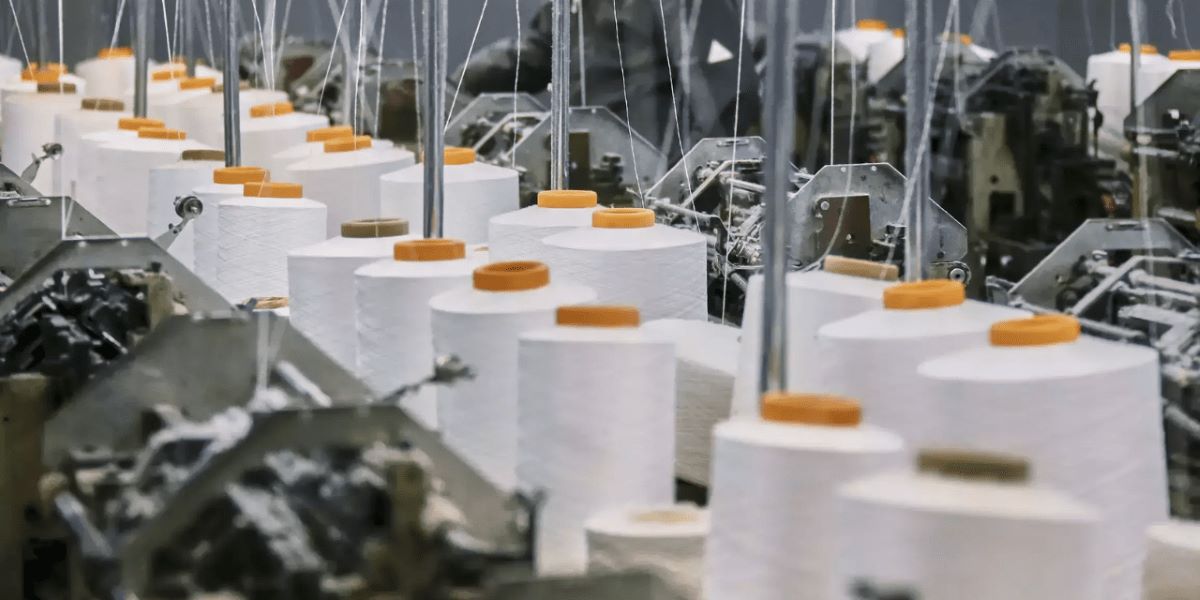
The integration of cutting-edge materials like graphane into conventional fibers is transforming India’s textile industry. The focus is on increasing the use of viscose, a widely used semi-synthetic fiber, to create high-performance textiles with global appeal. This initiative, exemplified by the groundbreaking collaboration between Birla Cellulose and Bhilwara Group Companies, positions India as a key player in the growing market for advanced textile materials.
Global advancements
The global graphene market from which graphane is derived is witnessing substantial growth. Several reports outline the growth in this market. For example, as per Grand View Research, the global graphene market was valued at $195.7 million in 2023 and projected to grow at a CAGR of 35.1 per cent from 2024 to 2030. According to Fortune Business Insights the global graphene market size was valued at $432.7 million in 2023 and is projected to grow from $570.3 million in 2024 to $5,193.2 million by 2032, at a CAGR of 31.8 per cent during the forecast period. What’s pushing this growth is the growing demand from the electronics, automotive, and aerospace industries. The Asia Pacific region is a dominant player in the graphene market, due to its robust manufacturing sectors and increasing investments in technology.
Global trade in graphene-related materials is increasing, with countries like China and the US as major exporters. The import of graphene-based products is also rising, as countries seek to integrate these materials into their manufacturing processes.
The viscose connection
The evolution of graphane fibers is closely intertwined with the existing viscose industry. Viscose, a semi-synthetic fiber, has long been a staple in textiles. Researchers are exploring ways to integrate graphane into viscose production to enhance its properties. Internationally, many initiatives are gaining traction.
European Research initiatives: Several European research consortia are focusing on integrating graphene into textile fibers for applications in smart textiles and wearable sensors. These projects often involve collaborations between universities, research institutions, and textile manufacturers, aiming to develop functional textiles with enhanced conductivity and durability.
South Korean advancements: South Korean companies are actively researching and developing graphene-enhanced fibers for applications in high-performance sportswear and industrial textiles. These efforts are driven by the country's strong focus on advanced materials and textile innovation.
US development: Companies within the US are exploring Graphene enhanced fibers for military applications, and for the development of advanced body armor.
India scenario
The agreement between Aditya Birla Group's Birla Cellulose, Grasim Industries, and Bhilwara Group Companies marks a an important moment in India's textile evolution. This collaboration aims to manufacture viscose fibers reinforced with graphene, leveraging the material's exceptional strength, durability, and thermal properties. TACC Ltd will supply graphene derivatives, while RSWM Ltd will utilize the improved viscose fibers to produce advanced textiles. This initiative underscores India's commitment to innovation and its drive to elevate the quality and functionality of its textile products. The sheer scale of Grasim Industries with a consolidated net revenue of Rs 1.3 lakh crore in the 2024 fiscal year, illustrates the potential impact of this collaboration.
Despite the immense potential, the widespread adoption of graphane-enhanced textiles faces numerous issues, including high production costs, scalability issues, and the need for standardization. However, ongoing R&D efforts, coupled with strategic collaborations like the one in India, are paving the way for a promising future. The Indian textile industry, with its vast resources and entrepreneurial spirit, is poised to capitalize on these advancements and establish itself as a global leader in the production of innovative, high-performance textiles.
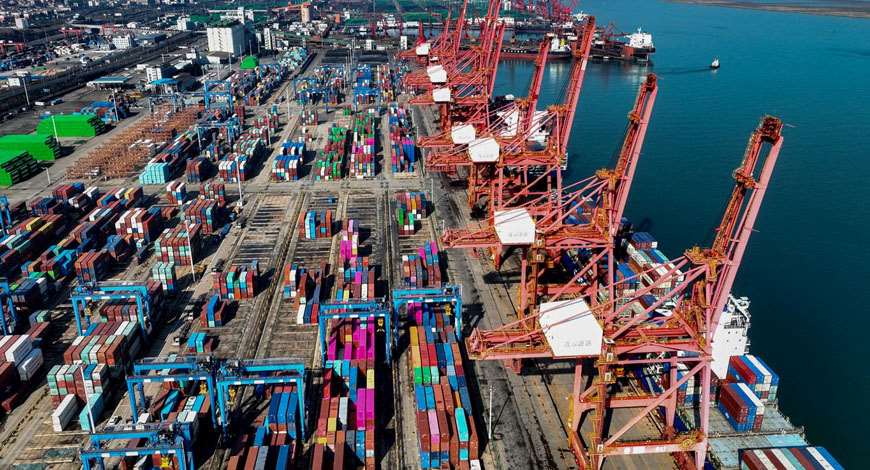
While the Western world grapples with overflowing closets and the growing discourse on sustainable fashion, a quiet change is unfolding in the global textile landscape. A recent report, ‘Global Fiber Consumption: Where the Next Decade’s Growth Will Come From’, unveils a startling prediction: the future of fiber consumption lies not in the saturated markets of North America and Europe, but in the developing economies of Asia and Africa.
Textile Exchange's 2024 Materials Market Report pegged global fiber production at 124 million tons, translating to 15.5kg per person. However, this figure is expected to grow to 160 million tons by 2030, raising a critical question: Who is driving this exponential growth?
"The traditional view of focusing on production facilities doesn't capture the true essence of demand," explains a lead analyst involved in the report. "We need to look at end consumption – the individual consumer – to grasp the long-term dynamics."
A new lens on global fiber demand
To unravel this complex web, researchers developed a ‘practitioner’s model’ a nuanced approach that transcends mere production figures. They crafted a Fiber Consumption Index (FCI), incorporating factors such as GDP per capita, urbanization rates, Human Development Index (HDI), and Heating Degree Days (HDD). "We normalized the data, setting North America as the benchmark with an FCI of 0.93," the analyst explains. "This allowed us to map per capita consumption across 19 distinct geographic regions."
Table 1: Regional per capita fiber consumption (2024)
|
Region |
FCI |
Per capita consumption (kg) |
|
North America |
0.93 |
35 |
|
East Asia |
0.92 |
34.6 |
|
West Europe |
0.81 |
30.4 |
|
North Europe |
0.79 |
29.6 |
|
Southeast Asia |
0.65 |
24.4 |
|
South America |
0.61 |
22.9 |
|
Central Asia |
0.55 |
20.6 |
|
Middle East |
0.52 |
19.5 |
|
Southern Africa |
0.45 |
16.9 |
|
East Europe |
0.43 |
16.1 |
|
Central America |
0.4 |
15 |
|
West Africa |
0.38 |
14.3 |
|
South Asia |
0.35 |
13.1 |
|
Northern Africa |
0.33 |
12.4 |
|
Pacific Islands |
0.3 |
11.3 |
|
Central Africa |
0.28 |
10.5 |
|
South Europe |
0.25 |
9.4 |
|
East Africa |
0.19 |
7.1 |
The Asian juggernaut, driving today's consumption
The data reveals that East Asia, with its vast population and growing middle class, is the current behemoth, accounting for 27 per cent (34.5 million tons) of global fiber consumption. In contrast, North America, despite its high per capita consumption, represents only 10 per cent (13.2 million tons).
Table 2: Regional total fiber consumption (2024)
|
Region |
Total consumption (mn tons) |
Percentage of global consumption |
|
East Asia |
34.5 |
27.4 |
|
North America |
13.2 |
10.5 |
|
Southeast Asia |
15.1 |
12 |
|
South Asia |
17 |
13.5 |
|
West Europe |
9.1 |
7.2 |
|
North Europe |
4.1 |
3.3 |
|
Other Regions |
32.9 |
26.1 |
|
Global Total |
126 |
100 |
However, the future narrative is even more compelling. By 2035, the report projects a dramatic shift, with Asia and Africa leading the charge. Using GDP growth projections and a ‘saturation factor’ to account for varying consumption patterns, the model predicts a surge in fiber demand from these regions. In fact, India, with its rapidly increasing middle class and growing e-commerce sector, exemplifies this trend. As experts say, Indian textile market is seeing unprecedented growth and consumers are increasingly demanding affordable, fashionable clothing, pushing up domestic production and imports.
Table: 3 Regional incremental fiber consumption growth (2024-2035)
|
Region |
Incremental consumption (mn tons) |
Percentage of total growth |
|
South Asia |
23 |
42.6 |
|
Southeast Asia |
14 |
25.9 |
|
East Africa |
3.9 |
7.2 |
|
West Africa |
3.1 |
5.7 |
|
Other Regions |
10 |
18.5 |
|
Global Total |
54 |
100 |
Implications and future directions
The findings carry profound implications for industry stakeholders, investors, and policymakers. Fiber producers need to strategically position themselves in emerging markets focusing solely on saturated markets will lead to stagnation, point out experts. Moreover, the environmental implications are significant. As consumption rises in Asia and Africa, sustainable practices to mitigate the industry's footprint need to increase.
However, the report acknowledges its limitations, including assumptions about the FCI, production equalling consumption, and GDP projections. Future research will focus on refining the model, incorporating behavioral trends, and exploring sustainability scenarios.
Thus the global textile landscape is passing through a change, with Asia and Africa ready to reshape fiber consumption in the coming decade. As the world's wardrobe expands, the industry must adapt to this new reality, embracing both economic opportunity and environmental responsibility.
The fashion industry is known to generate 11.3 million tons of textile waste annually, with 2,150 clothing pieces discarded per second. This crisis is largely fueled by fast fashion, leading to almost 71 per cent of the respondents to Kearney’s 2024 Circular Fashion Index saying, they were willingly to pay a premium for more sustainable options. However, only 25 of the total surveyed 235 brands actively embrace circularity, adds the Index.
Once competitors, Smartwool and icebreaker now unite under VF Corporation to challenge fashion’s wasteful model. Smartwool’s Second Cut™ Project collected 1 million+ old socks for recycling, while icebreaker strives for a 100 per cent plastic-free supply chain. Their initiatives offer resale, take-back programs, and ZQRX-certified regenerative wool, ensuring full traceability from farm to fashion.
Made from repurposed yarn, Smartwool’s Second Cut™ Hike Sock bagged the ISPO Award 2023 for its groundbreaking sustainability efforts. Meanwhile, icebreaker reached 96.14 per cent plastic-free by 2024 and transparently reports its progress - aligning with 73 per cent of consumers who demand brand accountability.
Better Cotton has renewed its standard recognition agreement with the Brazilian Cotton Growers’ Association, ABRAPA.
Effective retroactively from October 2024 - October 2025, this agreement will automatically renew for another three years if all requirements are met.
Since 2014, ABRAPA’s Responsible Brazilian Cotton (ABR) Program has been recognized as equivalent to the Better Cotton Standards System (BCSS). This allows Brazilian farmers to sell their cotton as ‘Better Cotton’ in both national and international markets.
During the 2023/24 cotton season, the 440 Brazilian farms with ABR certification produced over 3 million metric tons of Better Cotton. This represents more than 83 per cent of Brazil's total cotton production.
Better Cotton requires its Strategic Partners to regularly reassess and, if necessary, update their standards to match the BCSS. This ensures that both standards evolve to support cotton farmers in meeting the market's demand for more sustainable cotton.
The new agreement confirms the ongoing alignment between the Better Cotton Standards System and the ABR Program.

The global garment export industry faces a paradox. While long-term projections indicate an overall decline, a group of top eight exporters reveal significant potential for growth. However, this potential is increasingly threatened by a critical vulnerability: a heavy over-reliance on the US market. Data compiled by David Birnbaum, a strategic planner in the garment export sector, casts a spotlight on this worrying trend.
US market volatility and influence
Birnbaum's analysis reveals several leading garment-exporting nations, despite their strengths, are dangerously dependent on the US market for their export revenues. This concentration of trade creates a precarious situation, exposing these economies to significant risks from fluctuations in the US economy, shifts in US trade policy, or changes in consumer preferences.
Over-dependence on the US market is a major concern for several key reasons.
US import fluctuations: US garment import trends are volatile. As Birnbaum's data shows, US imports peaked in 2019, dropped sharply in 2020, and experienced a collapse in 2023. This erratic pattern creates instability forexporting nations heavily reliant on the US.
Economic vulnerability: Dependence on a single market, especially one as large as the US, exposes exporting countries to its economic cycles. A US recession or slowdown can drastically reduce demand for garments, negatively impactingexporting economies.
Policy risks: Changes in US trade policies, tariffs, or import regulations can have immediate and severe consequences for countries that primarily export to the US. This geopolitical risk adds another layer of instability.
Shifting consumer preferences: Rapid changes in US consumer tastes and fashion trends can leave exporters scrambling to adjust. If a country's production is geared heavily toward specific US demands, a shift in those demands can lead to unsold inventory and economic losses.
Table: US garment imports over the years
|
Year |
US garment imports ($ mn) |
|
2015 |
89,089 |
|
2016 |
83,969 |
|
2017 |
83,550 |
|
2018 |
86,697 |
|
2019 |
87,384 |
|
2020 |
71,166 |
|
2021 |
87,287 |
|
2022 |
105,353 |
|
2023 |
81,591 |
|
2024 |
83,710 |
India: Untapped potential, undue risk
India, identified by Birnbaum as a nation with substantial potential to excel as a fashion garment exporter, exemplifies this concern. While India possesses the capacity to expand its global reach, its strong ties to the US market pose a considerable threat to its long-term stability in the garment export sector.
Table: India's garment exports ($ mn)
|
Year |
US |
EU |
|
2015 |
3869 |
5410 |
|
2016 |
3822 |
5630 |
|
2017 |
3875 |
5819 |
|
2018 |
4024 |
6177 |
|
2019 |
4255 |
5862 |
|
2020 |
3202 |
4880 |
|
2021 |
4491 |
5693 |
|
2022 |
6005 |
6670 |
|
2023 |
4679 |
6081 |
|
2024 |
4933 |
5728 |
This table, derived from Birnbaum's data, clearly illustrates India's export values to the US and the EU over the past decade. The figures highlight the significance of both markets, but the potential danger lies in an overemphasis on the US.
Indonesia, a successful exporter, a looming shadow
Indonesia, with its well-established and successful garment export industry, faces a similar challenge. Birnbaum's research indicates that Indonesia's reliance on the US market, while contributing to its current success, represents a potential vulnerability that needs to be addressed proactively
Table: Indonesia’s garment exports ($ mn)
|
Year |
US |
EU |
|
2015 |
5154 |
1640 |
|
2016 |
4902 |
1715 |
|
2017 |
4745 |
1798 |
|
2018 |
4677 |
1846 |
|
2019 |
4565 |
1697 |
|
2020 |
3668 |
1701 |
|
2021 |
4385 |
1907 |
|
2022 |
5921 |
2227 |
|
2023 |
4344 |
1712 |
|
2024 |
4433 |
1461 |
This table, drawn from Birnbaum's data, underlines Indonesia's export activity. The data signals a need for strategic diversification to mitigate risks associated with US market fluctuations.
Thus Birnbaum's analysis emphasizes that while the top garment exporters possess significant strengths, the concentration of trade with the US poses a substantial threat. To secure long-term stability and growth, these nations must actively pursue diversification strategies, exploring new markets and reducing their vulnerability to the fluctuations and uncertainties of the US market.
Once a global powerhouse in cotton production, India now faces a stark reversal of fortunes. From being the world's leading cotton producer and exporter, the nation has shifted gears to becoming a net importer of this vital fiber. What led to this dramatic turnaround?
The rise and fall
India's cotton production touched unprecedented heights in the early 2000s, with the adoption of genetically modified Bt cotton. This revolutionary technology, introduced in 2002-03, promised protection against the voracious American bollworm pest. The impact was immediate and transformative: production nearly tripled within a decade, from 13.6 million bales to a peak of 39.8 million bales in 2013-14. India swiftly ascended to the pinnacle of global cotton production, illustrating the potential of scientific innovation in agriculture.
Table 1: India's cotton production and yield (selected years)
|
Year |
Production (mn bales) |
Yield (kg/hectare) |
|
1970-71 |
5.65 |
127 |
|
2002-03 |
13.6 |
302 |
|
2013-14 |
39.8 |
566 |
|
2018-19 |
26 |
449 |
|
2021-22 |
24.3 |
428 |
|
2023-24 |
25.4 |
436 |
|
2024-25 |
25 |
461 |
Source: USDA Foreign Agricultural Service (Note: Figures may vary slightly across different sources)
Technological plateau
However, this success story has since plateaued, with production projected to plummet to 25.0 million bales by 2024-25, the lowest in over a decade. The decline is multifaceted, but important factor lies in India's hesitance to embrace further technological advancements in cotton cultivation and processing. The regulatory scenario surrounding genetically modified crops has become increasingly stringent, stifling innovation and field trials of promising new technologies.
Regulatory challenges and public perception
India's regulatory framework, often influenced by public consultations dominated by environmental activists, has contributed to what critics call a "regulatory deadlock." The approval process for new GM technologies, essential for combating evolving pest threats like the pink bollworm, has become bogged down in bureaucratic hurdles. This reluctance extends beyond genetic modification to encompass modern farming practices such as drip irrigation, which remain underutilized compared to global counterparts like the US and Brazil.
Economic and social impact
The repercussions are profound. Farmers, once buoyed by the promise of increased yields and reduced pest damage, now face stagnant productivity and increased vulnerability to pests and diseases. The economic impact is stark: lower yields diminish farm incomes, while increased dependence on imports strains India's trade balance. India's cotton imports was $184.64 million in January 2025, compared to just $19.62 million in January 2024. The CAI projects imports in 2024-25 may double compared to the previous year, reaching an estimated 3.00 million bales, while exports are projected to be 1.70 million bales. In 2024-25 alone, imports are projected to double compared to the previous year, underscoring the industry's declining competitiveness on the global stage.
Table 2: India's cotton imports and exports (mn bales)
|
Year |
Imports |
Exports |
|
2011-12 |
7.5 |
129.59 |
|
2013-14 |
11.51 |
116.96 |
|
2018-19 |
35.37 |
43.55 |
|
2020-21 |
11.03 |
77.59 |
|
2022-23 |
10 |
35 |
|
2024-25 |
3 |
1.7 |
Source: Cotton Advisory Board & Cotton Association of India
Path forward
The path forward demands a renewed commitment to scientific research and a streamlined, science-based regulatory framework for agricultural biotechnology. Embracing modern farming techniques and investing in research and development for climate-resilient and pest-resistant seed varieties are critical steps to revitalizing India's cotton sector. The challenge is clear: without a technological resurgence, India risks relinquishing its storied legacy as a global leader in cotton production.
As policymakers and stakeholders convene to chart the future course of India's cotton industry, the imperative is to learn from past successes and failures alike. The tale of Indian cotton, once marked by innovation and resilience, must not become a cautionary tale of missed opportunities. The time is ripe for bold, decisive action to reclaim India's position as a beacon of agricultural innovation on the global stage.

